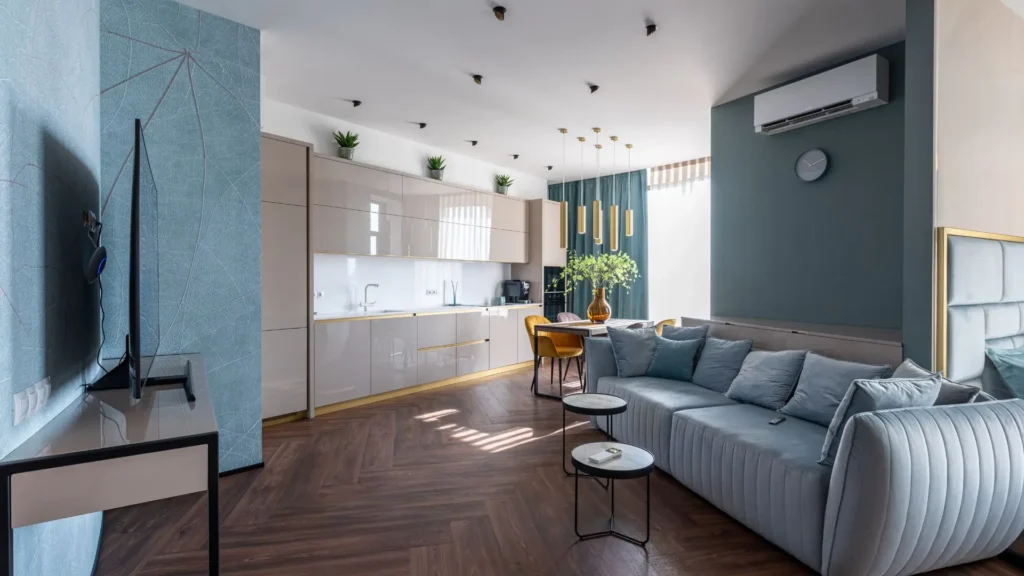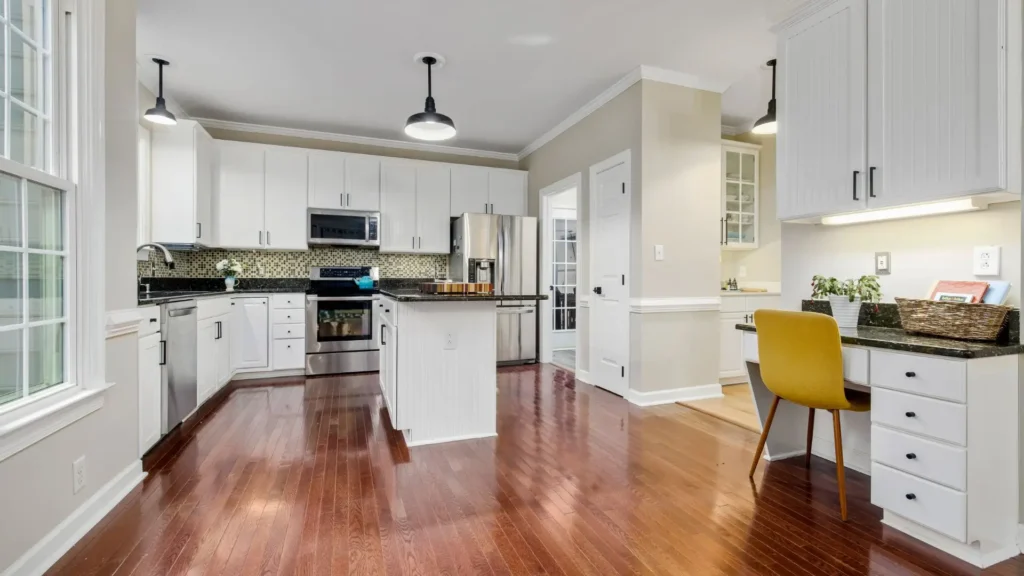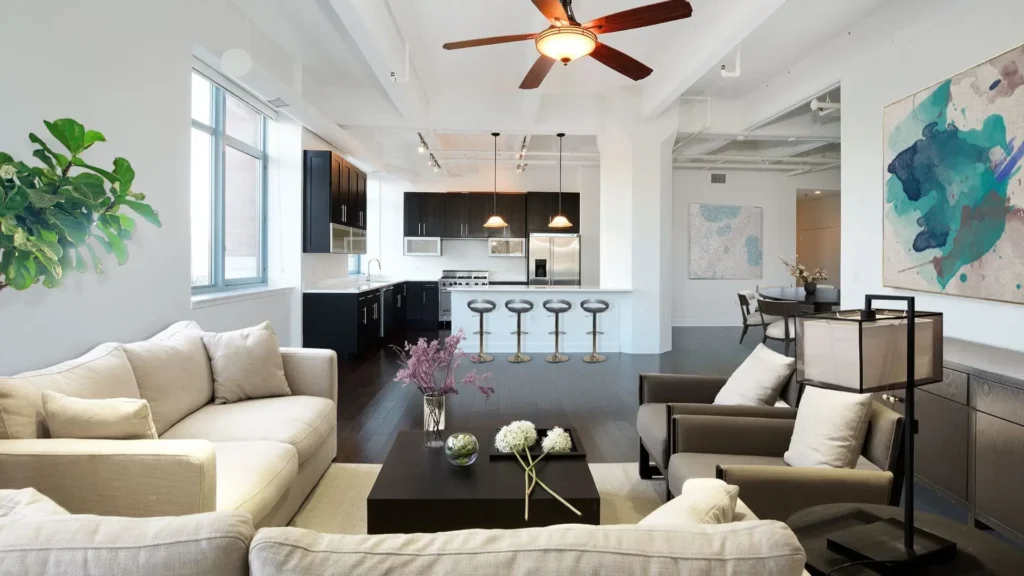Welcome to the world of open-plan living — a design trend that’s transformed the way Kiwis experience home. From brighter spaces to better flow, modern New Zealand homes are embracing open layouts that bring people together and make everyday living feel effortless. Whether you’re renovating a classic villa or building your dream home from scratch, open-plan design offers a fresh, functional approach to living that suits our laid-back lifestyle. In this article, we’ll explore the many benefits of open-plan living in modern home design across NZ, why it works so well in our unique environment, and how you can make it work for your space too.
The benefits of open-plan living in modern home design NZ include improved natural light, better airflow, and enhanced indoor-outdoor flow — all ideal for New Zealand’s lifestyle and climate. This layout also creates a sense of spaciousness, encourages social connection, and offers flexibility for families and entertaining. Open-plan spaces are increasingly popular in Kiwi homes for their modern, functional, and visually appealing design.
Table of Contents
What Is Open-Plan Living?
Open-plan living is a modern approach to home design where traditional barriers between rooms are removed to create one large, connected living space. Instead of having separate, enclosed rooms for cooking, dining, and relaxing, an open-plan layout combines these areas—typically the kitchen, living room, and dining room—into a single, flowing environment. This design encourages more interaction among household members and creates a spacious, airy feel that many homeowners find more practical and enjoyable.
One of the most defining features of open-plan living is the absence of internal dividing walls. This doesn’t mean the space lacks structure; rather, it relies on thoughtful design elements such as furniture arrangement, lighting, and flooring to visually define different zones within the open space. The result is a home that feels more expansive and adaptable to various lifestyles and needs.
The concept of open-plan living has evolved significantly over time. In the past, homes were built with a series of smaller, enclosed rooms—each serving a specific purpose. This traditional layout was often favored for its privacy and ability to contain noise or heat. However, as modern life became more centered around shared activities and multi-functional living, the demand for open spaces grew. People began to value a sense of connection over compartmentalization, leading to a shift in architectural trends.
In New Zealand, open-plan living has become increasingly popular, particularly in new builds and home renovations. With our focus on lifestyle, entertaining, and strong connections to the outdoors, this design style makes perfect sense. Kiwi homeowners appreciate the way open-plan spaces allow light to flow freely through the home, enhance ventilation, and create an inviting environment for family and friends. Whether you’re building a new home or updating an older one, open-plan living offers a modern solution that aligns beautifully with the way we live in Aotearoa today.

Top Benefits Of Open-Plan Living In NZ Homes
Open-plan living has become a hallmark of modern home design in New Zealand, and for good reason. As Kiwi families seek spaces that are more connected, brighter, and better suited to flexible lifestyles, the open-plan layout offers practical and aesthetic benefits that fit perfectly with our way of life. Below are some of the most impactful advantages of choosing an open-plan home design, broken into easy-to-digest sections to help you understand what makes this layout so appealing in the New Zealand context.
More Space, Less Clutter
One of the most immediate benefits of open-plan living is the feeling of spaciousness it creates. By removing interior walls that separate rooms, a home instantly feels larger and more open—even if the square footage hasn’t changed. This is particularly valuable in urban centres like Auckland or Wellington, where land is limited and homes are often compact.
Psychologically, open spaces can also reduce stress by eliminating visual clutter and encouraging a more minimal approach to interior styling. Without walls cutting off each area, natural organization and cleanliness are often easier to maintain. For example, in a small townhouse, an open-plan layout can turn a confined living area into a multipurpose zone that feels comfortable and breathable.
Better Natural Light
Open-plan designs naturally allow light to travel freely throughout the home. Without walls blocking the flow of sunlight, spaces can benefit from daylight entering from multiple angles. This is especially beneficial in New Zealand, where homes are often designed to maximize sun exposure for both aesthetic and energy efficiency reasons.
Natural light not only makes a home feel warmer and more welcoming, but it also contributes to overall wellbeing and reduces the need for artificial lighting during the day. A typical example might be a central Auckland apartment where, by knocking down a dividing wall between the kitchen and lounge, light from the balcony windows now floods the entire space.
Social And Entertaining Advantages
Open-plan living is ideal for those who love to entertain. The design naturally encourages social interaction by bringing the kitchen, dining, and living areas into one shared space. This allows hosts to cook while still being part of the conversation, making gatherings more inclusive and relaxed.
In many Kiwi households, the kitchen serves as the heart of the home—a place not just for food preparation, but for connection. Whether it’s having a casual dinner with friends or a birthday celebration with extended whānau, an open-plan layout removes barriers and enhances the overall experience. Many New Zealand architects also note that clients specifically request open spaces for ease of entertaining and communal living.
Better For Families
For growing families, open-plan layouts provide a sense of togetherness without sacrificing functionality. Parents can cook while keeping an eye on the kids, helping with homework at the dining table, or monitoring playtime in the living area. This visibility and interaction make daily life smoother and more connected.
It’s a practical solution for busy households where multitasking is essential. Imagine preparing dinner while checking in on your child’s school project or holding a conversation with your partner across the room. It creates a natural rhythm of interaction and oversight that closed-off rooms often disrupt.
Seamless Indoor-Outdoor Flow
One of the defining features of modern New Zealand homes is the emphasis on indoor-outdoor living. Open-plan designs lend themselves beautifully to this concept by creating seamless transitions between interior spaces and outdoor areas like decks, patios, or gardens.
Large sliding or bifold doors are often used to open up entire walls, allowing residents to extend their living areas directly onto outdoor spaces. This is particularly effective in warmer months when al fresco dining and social gatherings are popular. Given New Zealand’s mild climate and love of nature, integrating the indoors with the outdoors has become a key priority in architectural design.
Flexible Layouts
Modern lifestyles demand versatility, and open-plan homes deliver just that. The absence of fixed walls allows for flexible use of space—perfect for working from home, hosting guests, or adapting to changing family needs over time.
You might have a home office corner by day that transforms into a yoga space in the evening, or a dining table that doubles as a homework station. This adaptability not only maximizes the use of every square metre but also allows homeowners to tailor their living areas to suit their evolving routines. Builders across New Zealand are increasingly designing homes with this flexibility in mind, knowing how important it is to clients balancing work, family, and leisure.
Each of these benefits speaks to the lifestyle, climate, and cultural values unique to New Zealand. From enhanced social interaction and natural light to practicality for families and ease of entertaining, open-plan living is more than just a design choice—it’s a reflection of how Kiwis like to live. When thoughtfully designed, it brings comfort, beauty, and functionality into perfect alignment.

Things To Consider Before Going Open-Plan
While open-plan living has become a hallmark of modern home design in New Zealand, it’s not without its challenges. Before knocking down walls or drawing up renovation plans, it’s important to weigh a few key considerations to ensure this layout suits your lifestyle and property.
Noise Control Can Be Tricky
One of the most common concerns with open-plan spaces is the lack of sound barriers. Without walls to contain noise, everyday sounds from the kitchen, TV, or conversations can easily carry across the entire space. This can be especially noticeable in family homes or when hosting guests. To help absorb sound and reduce echo, consider adding soft materials like rugs, curtains, and upholstered furniture. Acoustic panels or strategically placed bookshelves can also create subtle sound breaks without compromising the open feel.
Heating And Cooling Efficiency Matters
Large open spaces can be more difficult to heat in winter or keep cool in summer—especially in regions like Canterbury or the South Island where temperatures vary more dramatically. Since warm or cool air isn’t contained within one room, it can lead to increased energy usage. To improve comfort and efficiency, think about double glazing, good insulation, and energy-efficient heating solutions like heat pumps or underfloor systems. Zoned climate control systems are also becoming increasingly popular in newer NZ homes.
Privacy Can Be Limited
In an open-plan layout, everyone tends to share the same space at the same time, which may not suit all households. If you work from home, have teenagers, or simply value quiet corners to unwind, the openness might start to feel a little exposed. You can still enjoy the benefits of open-plan living by introducing subtle zoning techniques—such as sliding doors, cabinetry dividers, or furniture arrangement that visually separates different functions without fully closing off areas.
Zoning Helps Define The Space
Just because it’s open doesn’t mean it has to feel undefined. Zoning is the key to making an open-plan layout feel intentional and balanced. Use lighting, flooring changes, or color palettes to create distinct areas for cooking, dining, and relaxing. A well-placed kitchen island or pendant lights over a dining table can help anchor different parts of the space while maintaining visual flow.
Consent May Be Required In New Zealand
If you’re planning to alter your home’s structure—especially when removing load-bearing walls—you may need building consent. New Zealand’s Building Code has strict requirements around safety, ventilation, and structural changes. It’s always a good idea to consult with a licensed building practitioner or architect before making any major layout changes. Some alterations might also require council approval, particularly in older homes or heritage zones.
Think About The Long-Term Functionality
Trends come and go, but how a home functions for your daily life is what matters most. Consider how your needs might evolve—open-plan living works well for growing families or those who love to entertain, but might need to be adapted as kids grow up or lifestyles change. Creating a layout that offers both openness and flexibility will help your home stay functional and enjoyable for years to come.
In summary, open-plan living offers undeniable benefits, but it’s not a one-size-fits-all solution. With thoughtful design and an understanding of the potential drawbacks, you can create an open-plan space that’s not just beautiful—but also practical, efficient, and uniquely tailored to your New Zealand lifestyle.

Is Open-Plan Right For Your Home?
Open-plan living has become a hallmark of modern home design in New Zealand, but it’s not a one-size-fits-all solution. While it offers many lifestyle and aesthetic benefits, it’s important to evaluate whether it suits your home, your routine, and your personal preferences. Before diving into a renovation or new build, consider these key factors to determine if an open-plan layout is the right fit for your living space.
Lifestyle
Think about how you use your space on a daily basis. Do you love hosting friends and family, or enjoy cooking while chatting with others? An open-plan setup allows for easier interaction and movement throughout the home, which makes it great for social households. If you’re someone who values connection, flow, and a more casual living style, open-plan living could be perfect for you. On the other hand, if you need clearly defined quiet areas or dedicated spaces for work, you may need to incorporate smart zoning techniques within the open layout.
Budget
Renovating to create an open-plan space can range in cost depending on the structure of your existing home. If load-bearing walls need to be removed or structural reinforcements are required, expenses can rise quickly. New builds often make open-plan design more affordable because it’s integrated from the ground up. Before making a decision, it’s wise to consult a builder or architect for a realistic cost estimate and to explore how open-plan can be achieved within your financial plan.
Space
Open-plan layouts are ideal for maximizing space in small to medium-sized homes, especially in urban New Zealand areas where square footage is limited. By removing walls and combining zones, you can create a sense of spaciousness that a traditionally divided home might lack. However, large homes can also benefit, using open-plan principles to bring light and flow into what might otherwise be disconnected rooms.
Building Type
Some homes lend themselves naturally to open-plan conversions—others may not. Classic New Zealand villas and bungalows can be modified, but it may involve more complex structural changes. State houses, for example, may have tighter layouts that require careful planning to open up. If you’re building from scratch, you have the advantage of designing with openness, light, and movement in mind from the beginning.
Talk To A Kiwi Architect Or Interior Designer
Ultimately, deciding whether open-plan living is right for your home should be a collaborative process. Speaking with a local architect or interior designer can help you understand what’s possible based on your property, lifestyle, and budget. They’ll offer expert insights into structural changes, layout solutions, and smart design choices tailored to the New Zealand climate and way of life. With the right advice, you can create an open-plan space that’s not just beautiful—but also deeply functional and uniquely yours.

Expert Tips For Designing An Open-Plan Space In NZ
Designing an open-plan space in New Zealand requires more than just knocking down a few walls — it’s about creating a flow that complements the way Kiwis live, entertain, and connect with their surroundings. Whether you’re renovating an older home or planning a brand-new build, these expert tips will help you make the most of your open-plan layout while maintaining a sense of warmth, functionality, and Kiwi style.
Use Of Natural Materials
One of the defining features of modern New Zealand home design is the use of natural, local materials. Think warm timber floors, exposed beams, or stone countertops — these materials add texture, character, and a sense of connection to nature. They also reflect Aotearoa’s stunning landscapes and work beautifully in open-plan layouts, which often rely on visual cohesion across connected spaces. Timber, in particular, is a popular choice for flooring and ceilings, offering warmth and durability that suits our climate and lifestyle.
Island Benches, Rugs, And Lighting To Create Visual Zones
In an open-plan layout, clear separation between functional areas is key — even when there are no walls. The strategic use of island benches, area rugs, and well-placed lighting can define zones within the larger space. For example, a kitchen island not only serves as a practical prep area and social hub, but it also subtly marks the boundary between the kitchen and dining space. Similarly, a large rug can anchor a living room setting, while pendant lighting above a dining table creates a sense of intimacy and focus. These design elements help break up the openness without compromising flow or connectivity.
Aligning Design With The Kiwi Lifestyle
Open-plan living works so well in New Zealand because it aligns naturally with how we live — relaxed, outdoorsy, and community-focused. A well-designed open-plan space should enhance that lifestyle. Consider how your interior connects to your outdoor areas. Large sliding doors, bifold windows, or even a kitchen servery window can create seamless indoor-outdoor flow — perfect for summer barbecues, family gatherings, or simply enjoying a sunny afternoon. Also, think about how spaces can flex as your needs change. A dining area might double as a workspace, or a quiet corner can become a reading nook. Designing with flexibility in mind ensures your open-plan space serves your family now and into the future.
By incorporating natural materials, clever zoning techniques, and a layout that complements how Kiwis live and entertain, you can create an open-plan space that feels cohesive, comfortable, and effortlessly modern. Whether you’re in the city or surrounded by nature, these tips will help you shape a space that’s both functional and beautifully New Zealand.

Real-Life Examples Or Case Studies
Open-plan living isn’t just a design trend—it’s a lifestyle upgrade that many Kiwi homeowners are already enjoying. To bring the concept to life, let’s take a closer look at two real-life examples that showcase how open-plan spaces can completely transform a home. Whether you’re planning a renovation or building from scratch, these stories offer inspiration and practical insight into what’s possible when you open up your space.
Case Study 1: A Classic Villa In Auckland Gets A Contemporary Makeover
In Grey Lynn, Auckland, a young couple decided to renovate their early 1900s villa to better suit their growing family. While the home had character, the interior was made up of small, enclosed rooms that felt disconnected and dim. By working with a local design-build team, they removed several interior walls to create a seamless open-plan kitchen, dining, and living area. Large bifold doors were added to connect the new space to the backyard, instantly enhancing the natural light and airflow.
The result? A bright, spacious environment perfect for entertaining friends, watching the kids play, or relaxing after work. This renovation not only improved functionality but also added significant resale value to the home.
Case Study 2: A New Build In Tauranga Embraces Open-Concept Design
A family building their forever home in Tauranga worked with a local architect to design an open-plan layout from the ground up. Instead of separating the kitchen, dining, and lounge areas, they opted for a fluid space anchored by a large kitchen island and distinct zones marked by lighting and furniture placement.
One of the standout features was the indoor-outdoor flow, with wide sliding doors opening onto a covered deck and outdoor kitchen—ideal for summer BBQs and year-round entertaining. The open design allowed for plenty of natural light and made the space feel warm, connected, and family-focused.
These examples highlight how open-plan living can be tailored to different styles—whether you’re working with a century-old villa or a modern new build. They also show how thoughtful design choices, like incorporating indoor-outdoor flow and flexible zones, can make everyday living more enjoyable. If you’re considering a similar transformation, it’s worth speaking to a local home designer or builder who understands both your needs and the New Zealand lifestyle.
Discover how we can bring your vision to life with smart, stylish, and functional design. Whether you’re building new or renovating, our team is here to help you make the most of modern open-plan living.

FAQs: About The Benefits Of Open-Plan Living In Modern Home Design NZ
What is open-plan living in home design?
Open-plan living refers to a home layout where multiple spaces—such as the kitchen, dining, and living areas—are combined into one large, open area without internal dividing walls. It promotes a sense of space, flow, and social connection.
Why is open-plan living popular in New Zealand?
Open-plan living suits the New Zealand lifestyle because it supports indoor-outdoor flow, maximizes natural light, and creates a relaxed, family-friendly environment. It also works well with the modern Kiwi preference for social spaces and entertaining.
What are the main benefits of open-plan living?
Key benefits include better natural light, improved airflow, enhanced space perception, easier social interaction, and design flexibility. It also creates a more inviting atmosphere and can add value to your home.
Does open-plan living suit small homes?
Yes, it’s particularly effective in small homes. Removing unnecessary walls opens up the space, making the home feel larger and more functional. Clever furniture placement and zoning can help define areas without closing them off.
How do I deal with noise in an open-plan layout?
Noise can be managed with soft furnishings like rugs, curtains, and acoustic panels. You can also create semi-zoned spaces using shelving, screens, or furniture placement to reduce sound travel while maintaining openness.
Can I renovate an older NZ home to include open-plan living?
Absolutely, many homeowners renovate villas, bungalows, and state houses to open up the living areas. It may involve removing walls, reworking structural elements, or adding support beams, so consulting a builder or architect is recommended.
Is open-plan living energy efficient?
It can be, especially when designed with passive heating and cooling in mind. However, heating or cooling large open spaces may require efficient systems. Insulation, orientation, and window placement all play a role in energy performance.
How do I create zones in an open-plan space?
Zoning can be achieved through rugs, lighting, furniture arrangement, and color changes. For example, pendant lights over the dining table or a sectional sofa can visually divide areas without the need for walls.
What are the downsides of open-plan living?
Potential downsides include less privacy, more noise, and difficulty with temperature control. However, with thoughtful design, most of these challenges can be managed or minimized.
Is open-plan living a good investment for resale value?
Yes, open-plan layouts are highly desirable among Kiwi buyers. They often boost property appeal and resale value, especially when combined with modern finishes, natural light, and strong indoor-outdoor connections.
Conclusion
Open-plan living has become a defining feature of modern home design in New Zealand, offering homeowners a way to create brighter, more spacious, and more connected living environments. From improving natural light and airflow to enhancing social interaction and family functionality, the benefits of an open-plan layout are both practical and lifestyle-driven. Whether you’re building from the ground up or considering a renovation, embracing this layout can significantly transform the way you live in and enjoy your home. Take a moment to consider how open-plan living could work in your own space—whether it’s integrating your kitchen and lounge, opening up your dining area, or creating better indoor-outdoor flow. Thinking of redesigning your space? Talk to a local architect today. Want inspiration? Check out our latest modern home builds in NZ and see how open-plan design is shaping the future of Kiwi living.




